It is obvious for those who have spent time within a yoga studio that the practice space holds certain energy because of the way we conduct ourselves there. However, in yoga, the obvious gives way to layers of depth and subtly. What seems standard fare, such as removing our shoes prior to entering the practice space, reveals a spectrum of subtle, interconnected principles upon further reflection. Many studios uphold certain etiquettes to insure maximum benefit to everyone present. Though the purpose behind yoga studio etiquette may not be totally comprehended, the novice yogi is happy to comply with basic yoga studio formalities. In time, these formalities become the culture of the studio, and we rarely question the motives behind them.
Studio Etiquette You Should Know
Whether you are a well-seasoned practitioner, or just beginning your yoga journey, exploring the behaviors inherent to yogic spaces will deepen your connection to your yoga practice and the philosophy it derives from.
1. Leave Your Shoes At The Door
Superficially speaking, shoes bring the energy of route, daily affairs with them. The practice of being barefooted, however, extends beyond the shoe rack by the door. Generally, our feet are the first area of the body that connects with the earth. We ground into our mat and hold our asana poses steady through our feet. Our feet are the foundation of our posture, our gait, and are the living metaphor for “walking our path,” and “taking the first step forward.” Have you ever noticed that almost all yoga practitioners avoid stepping on one another’s mats? The feet release subtle energy. In traditional Vedic settings, a student avoids exposing the bottoms of their feet to their teacher. In turn, humbly bowing to, and touching the feet of their master, brings blessings to the initiate or devotee. By removing our shoes, keeping the souls of our feet clean, and observing how we present our feet towards our teachers and fellow students, we bring awareness to the subtle energy channels of the body.
2. Avoid Wearing Perfumes And Fragrances To Yoga Class.
On the surface it seems apparent that though you may enjoy a particular scent, other students may not appreciate your personal aroma in their practice space. Yoga is primarily a practice of breath, and having clean, pure, fresh air is vital to the conduction of prana within the body. As a yogi enhances their inner purity, synthetic fragrances or food-related odors can be both distracting to the mind and aggravating to the nervous system. As a teacher, I keenly sense a variety of fragrances on my students, whether natural, such as body odor, or applied scents like essential oils, hair products, or deodorant. When a student has deliberately applied fragrance to their body, I will rarely adjust their poses in order to keep their fragrance from clinging to me, and spreading throughout the studio. Arriving freshly showered to class, and as scent-free as possible, enhances the sattvic nature (high quality) of the practice space.
3. Observe Silence In The Asana Room.
Yoga studios draw a beautiful ensemble of souls into their space. Fellow practioners easily become friends, and sometimes grow into spiritual families. The development of the yogic community is oftentimes the glue that brings practitioners back to the same studio, same class, even the same mat placement, again and again. The community building aspect yoga is vital to the development of satsung, sacred gathering. With that said, the asana room is akin to a holy space. To many, the space and time set aside for a yoga class is the only “me time” they may have. To sit in quiet readiness prior to class sets the tone for inward development, and provides the space for subtle awareness to arrive. In opposition, general chitchat, however hushed it may be, is not only distracting to others, it maintains a currant of mundane energy from outside of the studio that, in some ways, overrides the delicacy of inward perception. By maintaining the energetic purpose of the asana space as an area of practice, introspection, and observation, the tone and ambiance of the studio becomes palpable to even the most novice yogi. Developing deeper relationships with your fellow practitioners is nearly effortless in such a space, because everyone is united in breath, focus, and energetic creation. With this in mind, welcome and converse with your friends and neighbors in the reception area of the studio, a place where both social and monetary exchanges are made. The ability to discern between the outer realms of the practice area, and the inner sanctum of the studio, is an active engagement of the subtle energy of yoga. Practicing purposeful silence in the asana space will beneficially enhance your yoga practice, and strengthen the bonds of your yogic community.
Why Studio Etiquette Is Important
Basic yoga studio etiquette houses subtle revelations and deeper comprehension of yogic practices. We are each personally responsible for upholding rules of engagement within the studio, but unless we ask ourselves “why,” the deeper significance behind these acts is lost in the adaptation of yet another societal code of conduct. Instead, look deeper to see beyond the protocol of yoga studio etiquette. Yoga is a precise and refined science. Each act, when practiced with awareness and frequency, has an inner effect greater than what may be perceived from the outside. Simply removing our shoes, arriving to our practice clean of fragrance, and silently holding space in the asana room, sets the tone of a yoga studio, and offers the opportunity for personal development that extends beyond the individual to the whole. In this way, we, as yoga practitioners, are not adopting cultural codes of conduct, but are, in essence, conducting our subtle energy with purposeful awareness and intent.
Learn More From YogaaRenew
YogaRenew is here to help you lean studio etiquette in which you can incorporating into your yoga teacher training. Reach out to YogaRenew today for more information.


 Mindfulness, however, does not necessarily require a
Mindfulness, however, does not necessarily require a 
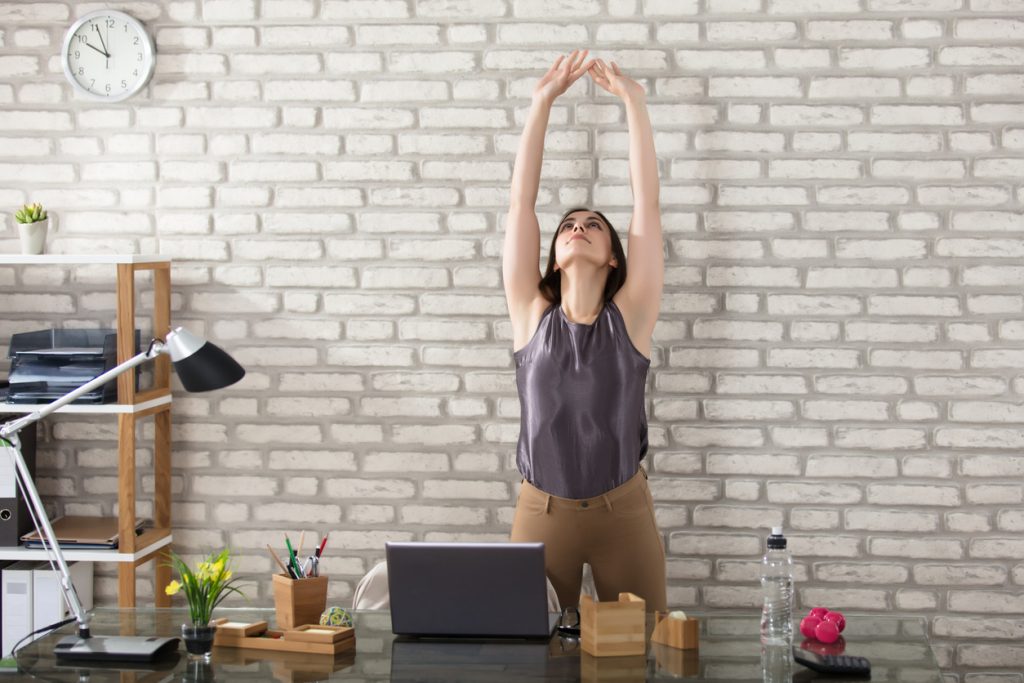
 Sometimes with a lack of productivity all you need is to reduce distraction and get still by centering yourself. Easy pose is the perfect way to accomplish this.
Sometimes with a lack of productivity all you need is to reduce distraction and get still by centering yourself. Easy pose is the perfect way to accomplish this. One of the benefits of mild inversions, like Downward Facing Dog, is its energizing qualities. Whenever your heart is placed over your head the brain is supplied with more oxygen as blood flows which increases concentration and mental function.
One of the benefits of mild inversions, like Downward Facing Dog, is its energizing qualities. Whenever your heart is placed over your head the brain is supplied with more oxygen as blood flows which increases concentration and mental function.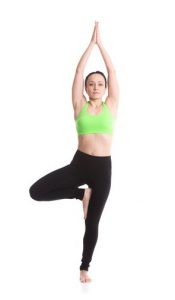 Challenging your balance is one sure way to boost productivity. Whenever your center of gravity is confronted you are forced to tune your drishti, or focal point, in order to be successful.
Challenging your balance is one sure way to boost productivity. Whenever your center of gravity is confronted you are forced to tune your drishti, or focal point, in order to be successful.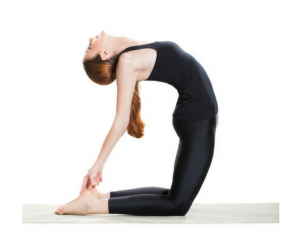 Heart opening or back-bending postures like Camel pose help to quiet all of the chatter in the mind. Some consider this pose to be quite challenging as you are vulnerably opening a part of your body that is often shielded and protected, your heart.
Heart opening or back-bending postures like Camel pose help to quiet all of the chatter in the mind. Some consider this pose to be quite challenging as you are vulnerably opening a part of your body that is often shielded and protected, your heart.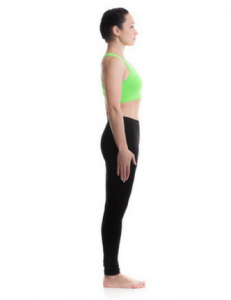 As a pose that seems pretty simple and straight forward, Mountain pose offers great benefits of improving concentration and focus in order to be more productive.
As a pose that seems pretty simple and straight forward, Mountain pose offers great benefits of improving concentration and focus in order to be more productive.
 I’ve always been involved in athletics. Although I wouldn’t necessarily call myself an athlete – the competitive nature of sports has carried over into my fitness regime. I’ve always wanted to be the strongest, fastest, or comparing the number of reps I get in before taking a rest break to the gal next to me. Through my yoga practice, I’ve learned three important things that allows me to maximize workouts so that when that competitive edge creeps up on me, I know I can crush my goals! Through finding my breath, improving my flexibility, and gaining more balance I can bring enjoyment, ease, and productive to all activities – whether it’s running, lifting weights, or going for a 90 minute Bikram session.
I’ve always been involved in athletics. Although I wouldn’t necessarily call myself an athlete – the competitive nature of sports has carried over into my fitness regime. I’ve always wanted to be the strongest, fastest, or comparing the number of reps I get in before taking a rest break to the gal next to me. Through my yoga practice, I’ve learned three important things that allows me to maximize workouts so that when that competitive edge creeps up on me, I know I can crush my goals! Through finding my breath, improving my flexibility, and gaining more balance I can bring enjoyment, ease, and productive to all activities – whether it’s running, lifting weights, or going for a 90 minute Bikram session. When you think of balance on the mat, you may think of the “I can stand on one foot with my eyes closed for 30 seconds” kind of balance. Balance in yoga helps us to bring balance into our lifestyles. As you go through your asanas, it forces you to use several muscle groups; moving from a stretch in Downward Facing Dog to tightening the core – to hopping in between the hands – to flexing the triceps to hover just above the mat in Chaturanga. In Tree Pose, you also encounter the need for flexibility and strength to find the balance you need when you tuck your foot, lift the chest, move your hands to heart center and dare to close your eyes.
When you think of balance on the mat, you may think of the “I can stand on one foot with my eyes closed for 30 seconds” kind of balance. Balance in yoga helps us to bring balance into our lifestyles. As you go through your asanas, it forces you to use several muscle groups; moving from a stretch in Downward Facing Dog to tightening the core – to hopping in between the hands – to flexing the triceps to hover just above the mat in Chaturanga. In Tree Pose, you also encounter the need for flexibility and strength to find the balance you need when you tuck your foot, lift the chest, move your hands to heart center and dare to close your eyes.
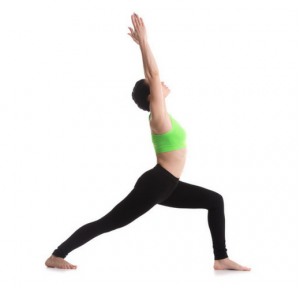 The image of a warrior is illustrated by strength, courage, persistence, and confidence which is exactly what the Warrior asanas exude. The rich symbolism of the Warrior asanas refers to the underlying story of the Hindu warrior, Virabhadra. Warrior I is a beautiful posture that will empower you and activate your inner warrior by improving your strength and flexibility. Begin in Mountain Pose (Tadasana) and gently step your feet a few feet apart from each other. Reach both of your arms up towards the sky with your palms touching while bringing your gaze up towards your hands. Next, slightly turn your left foot to the right so that your toes are pointing to the left of your body. Gently rotate your torso to the right and bend your right knee while making sure that your knee does not pass your toes. Hold this asana for 30 seconds-1 minute while focusing on your breath and channeling feelings of confidence and strength. Slowly release back to Tadasana and repeat this posture on the other side.
The image of a warrior is illustrated by strength, courage, persistence, and confidence which is exactly what the Warrior asanas exude. The rich symbolism of the Warrior asanas refers to the underlying story of the Hindu warrior, Virabhadra. Warrior I is a beautiful posture that will empower you and activate your inner warrior by improving your strength and flexibility. Begin in Mountain Pose (Tadasana) and gently step your feet a few feet apart from each other. Reach both of your arms up towards the sky with your palms touching while bringing your gaze up towards your hands. Next, slightly turn your left foot to the right so that your toes are pointing to the left of your body. Gently rotate your torso to the right and bend your right knee while making sure that your knee does not pass your toes. Hold this asana for 30 seconds-1 minute while focusing on your breath and channeling feelings of confidence and strength. Slowly release back to Tadasana and repeat this posture on the other side.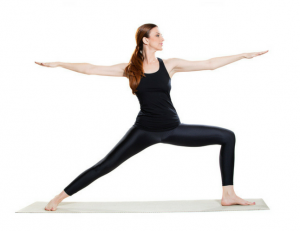 Transitioning into Warrior II will combine balance with core strength as well as ultimate focus. After Warrior I, return to Mountain Pose (Tadasana) and bring your left foot a few feet back on the mat while bending your right knee into a lunge without your knees passing your toes. Extend both of your arms by your sides so that they are parallel to the mat aligning straight with your legs and bring your gaze forward. Make sure that your torso is twisted to your left and draw your shoulder blades down your back. Take several deep breaths here while pressing down with your feet and engaging your core. This asana is beneficial for your entire body because it strengthens your shoulders, arms, and legs as well as improves your balance and stability. Warrior II will improve your ability to concentrate and focus with more clarity while building your physical and spiritual strength.
Transitioning into Warrior II will combine balance with core strength as well as ultimate focus. After Warrior I, return to Mountain Pose (Tadasana) and bring your left foot a few feet back on the mat while bending your right knee into a lunge without your knees passing your toes. Extend both of your arms by your sides so that they are parallel to the mat aligning straight with your legs and bring your gaze forward. Make sure that your torso is twisted to your left and draw your shoulder blades down your back. Take several deep breaths here while pressing down with your feet and engaging your core. This asana is beneficial for your entire body because it strengthens your shoulders, arms, and legs as well as improves your balance and stability. Warrior II will improve your ability to concentrate and focus with more clarity while building your physical and spiritual strength.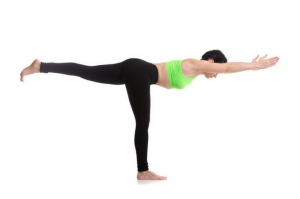 Return once again to Mountain Pose (Tadasana) and take a moment to bring your focus back to your breath. Warrior III requires significant balance and focus which are best achieved when your mind is not wandering. The benefits of this empowering asana include improved coordination, stability, and balance, strengthening of the legs and core as well as a deep stretch of the upper body. Take a deep inhale, reach your arms up towards the sky and on your exhale, slowly lift your left leg off the mat while lowering your torso forward. Allow your arms to lead your torso until it is parallel with the mat and so that your body creates a “T” shape. Flex your left foot and press firmly with your right foot, spreading your toes if that helps to maintain your balance. Hold this asana for several breaths while focusing on finding your center of gravity. To ease out of this asana, slowly return to Mountain Pose and bring your hands to your heart in prayer position.
Return once again to Mountain Pose (Tadasana) and take a moment to bring your focus back to your breath. Warrior III requires significant balance and focus which are best achieved when your mind is not wandering. The benefits of this empowering asana include improved coordination, stability, and balance, strengthening of the legs and core as well as a deep stretch of the upper body. Take a deep inhale, reach your arms up towards the sky and on your exhale, slowly lift your left leg off the mat while lowering your torso forward. Allow your arms to lead your torso until it is parallel with the mat and so that your body creates a “T” shape. Flex your left foot and press firmly with your right foot, spreading your toes if that helps to maintain your balance. Hold this asana for several breaths while focusing on finding your center of gravity. To ease out of this asana, slowly return to Mountain Pose and bring your hands to your heart in prayer position.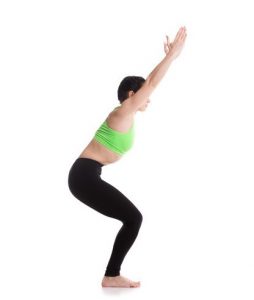 This asana is often called the “seat of power”, “fierce pose” or “lightning bolt pose” which all embody the asana’s empowering and strengthening properties. Chair Pose involves strength and perseverance because your body will immediately feel challenged when entering this asana. Begin in Mountain Pose (Tadasana) with your feet hip-width apart. As you inhale, reach your arms up towards the sky while slowly bending your knees and squatting down as if you are sitting in a chair. Press firmly through your heels and try to bring your focus to how your body is feeling; if your thighs are aching, try to meditate on this sensation. Find your balance here and remember not to resist this asana even if your body wants to ease out of it right away. After several breaths, return to Mountain Pose and bring your focus back to your breath. If you wish, reach your toes with your arms and twist from side to side in a Forward Fold to relax your arms and stretch your hamstrings. Persisting through Chair Pose provides all of the physical benefits of this asana such as strengthening the legs and back, stretching the chest and shoulders as well as a stronger sense of self and confidence.
This asana is often called the “seat of power”, “fierce pose” or “lightning bolt pose” which all embody the asana’s empowering and strengthening properties. Chair Pose involves strength and perseverance because your body will immediately feel challenged when entering this asana. Begin in Mountain Pose (Tadasana) with your feet hip-width apart. As you inhale, reach your arms up towards the sky while slowly bending your knees and squatting down as if you are sitting in a chair. Press firmly through your heels and try to bring your focus to how your body is feeling; if your thighs are aching, try to meditate on this sensation. Find your balance here and remember not to resist this asana even if your body wants to ease out of it right away. After several breaths, return to Mountain Pose and bring your focus back to your breath. If you wish, reach your toes with your arms and twist from side to side in a Forward Fold to relax your arms and stretch your hamstrings. Persisting through Chair Pose provides all of the physical benefits of this asana such as strengthening the legs and back, stretching the chest and shoulders as well as a stronger sense of self and confidence.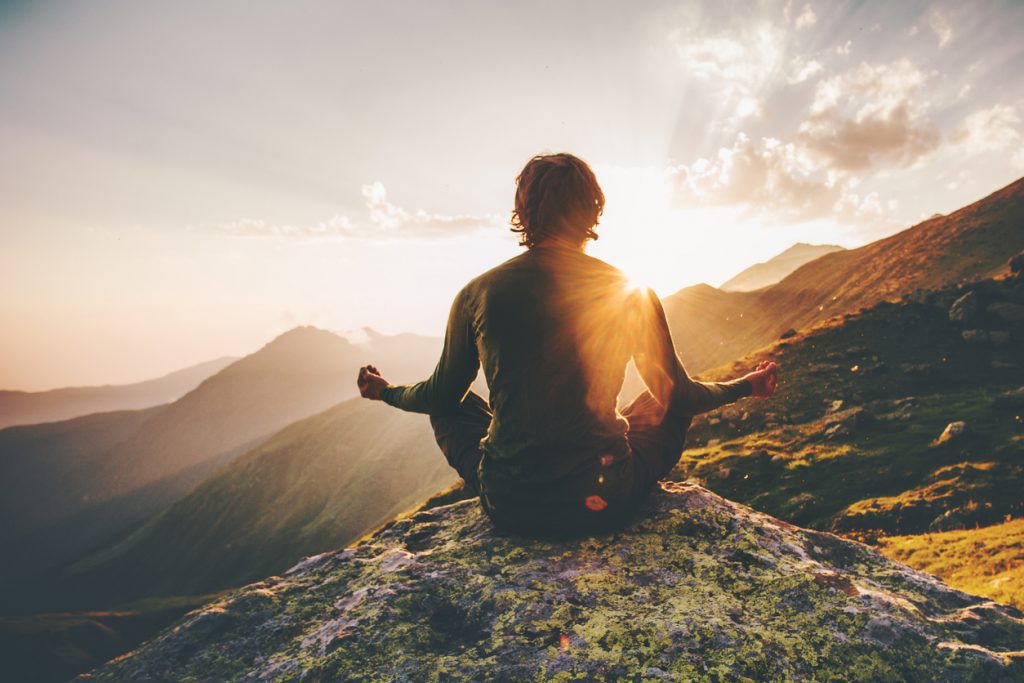




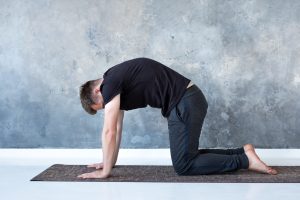



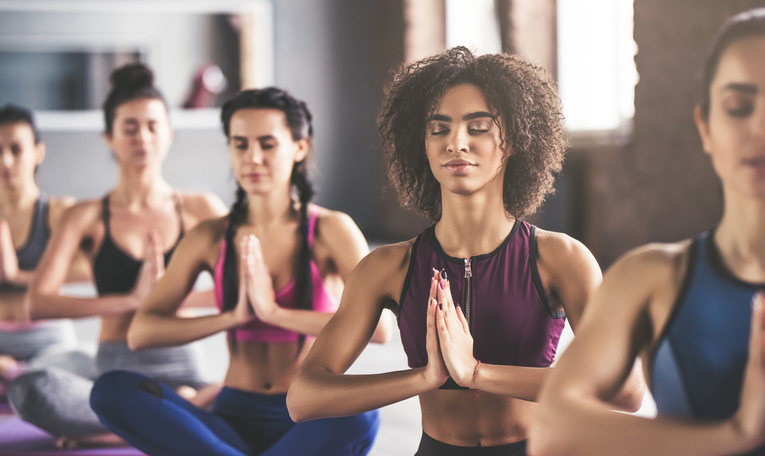
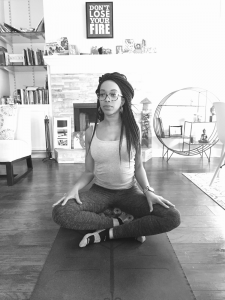 Begin in a comfortable seated position (in a chair, on bar stool, on a bolster, wherever), with your eyes preferable open. Fix your gaze on something and place one hand on your heart and the other on your belly. Breathe in deeply through your nose and as you exhale, audibly let the air out of your mouth. Do this about five times. As you engage in this breathing exercise say to yourself the following mantra, “I am light. I am love. I am okay.”
Begin in a comfortable seated position (in a chair, on bar stool, on a bolster, wherever), with your eyes preferable open. Fix your gaze on something and place one hand on your heart and the other on your belly. Breathe in deeply through your nose and as you exhale, audibly let the air out of your mouth. Do this about five times. As you engage in this breathing exercise say to yourself the following mantra, “I am light. I am love. I am okay.”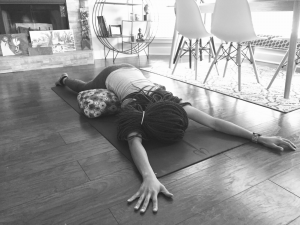 Begin lying on the floor face down and place a bolster or a thick pillow underneath you – right around your navel (solar plexus chakra). Next stretch your arms out overhead and take a V-position with your legs. You want to resemble a starfish on your stomach. Turn your head to one side (with eyes opened or closed), breathe in through your nose and hold for a slow count of four, and exhale out of your mouth for a slow count of four. While in this pose say to yourself the following mantra, “Today is today. Tomorrow is tomorrow. I am in control of my present.”
Begin lying on the floor face down and place a bolster or a thick pillow underneath you – right around your navel (solar plexus chakra). Next stretch your arms out overhead and take a V-position with your legs. You want to resemble a starfish on your stomach. Turn your head to one side (with eyes opened or closed), breathe in through your nose and hold for a slow count of four, and exhale out of your mouth for a slow count of four. While in this pose say to yourself the following mantra, “Today is today. Tomorrow is tomorrow. I am in control of my present.” Take Supta Baddha Konasana or Reclining Bound Angle pose with a bolster or thick pillow right between your shoulder blades. Place your arms out to the side (If you are at work or somewhere you can take seat, take this pose by placing both hands behind you on your low back, puff your chest out, and lift your head towards the ceiling).
Take Supta Baddha Konasana or Reclining Bound Angle pose with a bolster or thick pillow right between your shoulder blades. Place your arms out to the side (If you are at work or somewhere you can take seat, take this pose by placing both hands behind you on your low back, puff your chest out, and lift your head towards the ceiling).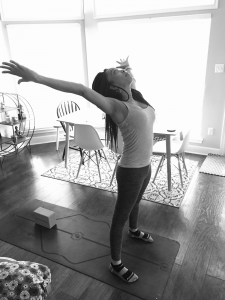 The last and final pose, I find to be helpful when I’m feeling triggered is taking a power stance. The pose is similar to Extended Mountain pose or Upward Salute pose, but instead you look like a vertical starfish. To do this, take your arms overhead, spread wide, and stand firmly grounded with your legs hip width apart. Take a slight backbend and allow your heart to shine towards the ceiling. Bring to mind what has just triggered you – take a deep inhale and audibly exhale. Say to yourself, “I felt triggered because…but, I am taking my power back. I am love. I am power.”
The last and final pose, I find to be helpful when I’m feeling triggered is taking a power stance. The pose is similar to Extended Mountain pose or Upward Salute pose, but instead you look like a vertical starfish. To do this, take your arms overhead, spread wide, and stand firmly grounded with your legs hip width apart. Take a slight backbend and allow your heart to shine towards the ceiling. Bring to mind what has just triggered you – take a deep inhale and audibly exhale. Say to yourself, “I felt triggered because…but, I am taking my power back. I am love. I am power.”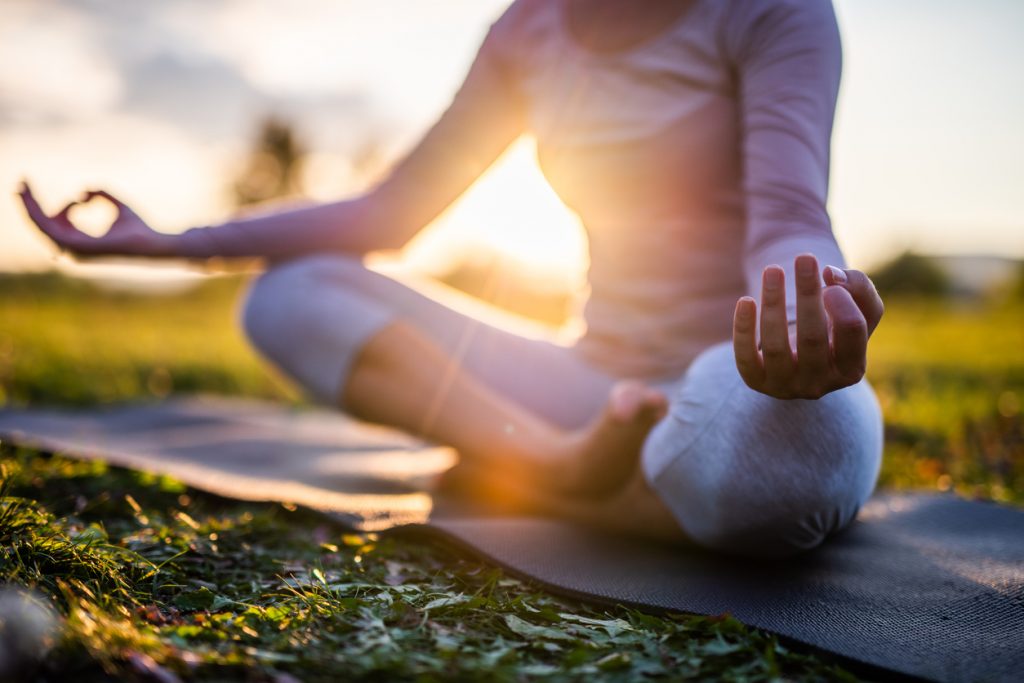
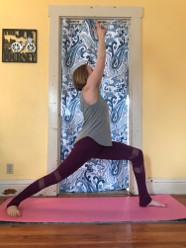
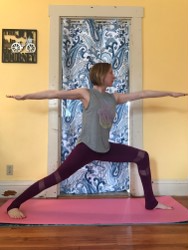

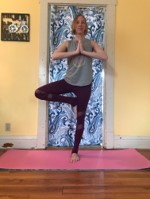
 Although it might be challenging at first, meditation becomes easier and easier with practice and there are a few ways that can make the beginning of your practice easier. Let’s get right into it!
Although it might be challenging at first, meditation becomes easier and easier with practice and there are a few ways that can make the beginning of your practice easier. Let’s get right into it! Using
Using 

